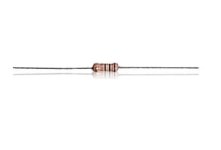ryan
10 kW
Alright, please help me out here.
I have a switch and a resistor. Now what order do they connect?
The switch:
View attachment 1
The resistor:

The switch has 3 poles: labelled [1],[2],[3].
I'm thinking:
pack --> [1]switch[3] --> resistor --> controller
Is this right?
What's the 3rd pole for on the switch? I tried the setup with aligator clip wires a 9v battery and a multimeter and can get the power to switch between 0v and 9v. But the LED never turned on. Is that because it needs 12v? If I use the second pole instead it only goes to 8v.
I'm going to be running this on an 18S setup with a paralleled 100v 100A circuit breaker between the pack and the controller.
I expect to push the switch on, wait 10 seconds, flip the circuit to on, push switch off.
I have a switch and a resistor. Now what order do they connect?
The switch:
View attachment 1
The resistor:

The switch has 3 poles: labelled [1],[2],[3].
I'm thinking:
pack --> [1]switch[3] --> resistor --> controller
Is this right?
What's the 3rd pole for on the switch? I tried the setup with aligator clip wires a 9v battery and a multimeter and can get the power to switch between 0v and 9v. But the LED never turned on. Is that because it needs 12v? If I use the second pole instead it only goes to 8v.
I'm going to be running this on an 18S setup with a paralleled 100v 100A circuit breaker between the pack and the controller.
I expect to push the switch on, wait 10 seconds, flip the circuit to on, push switch off.


